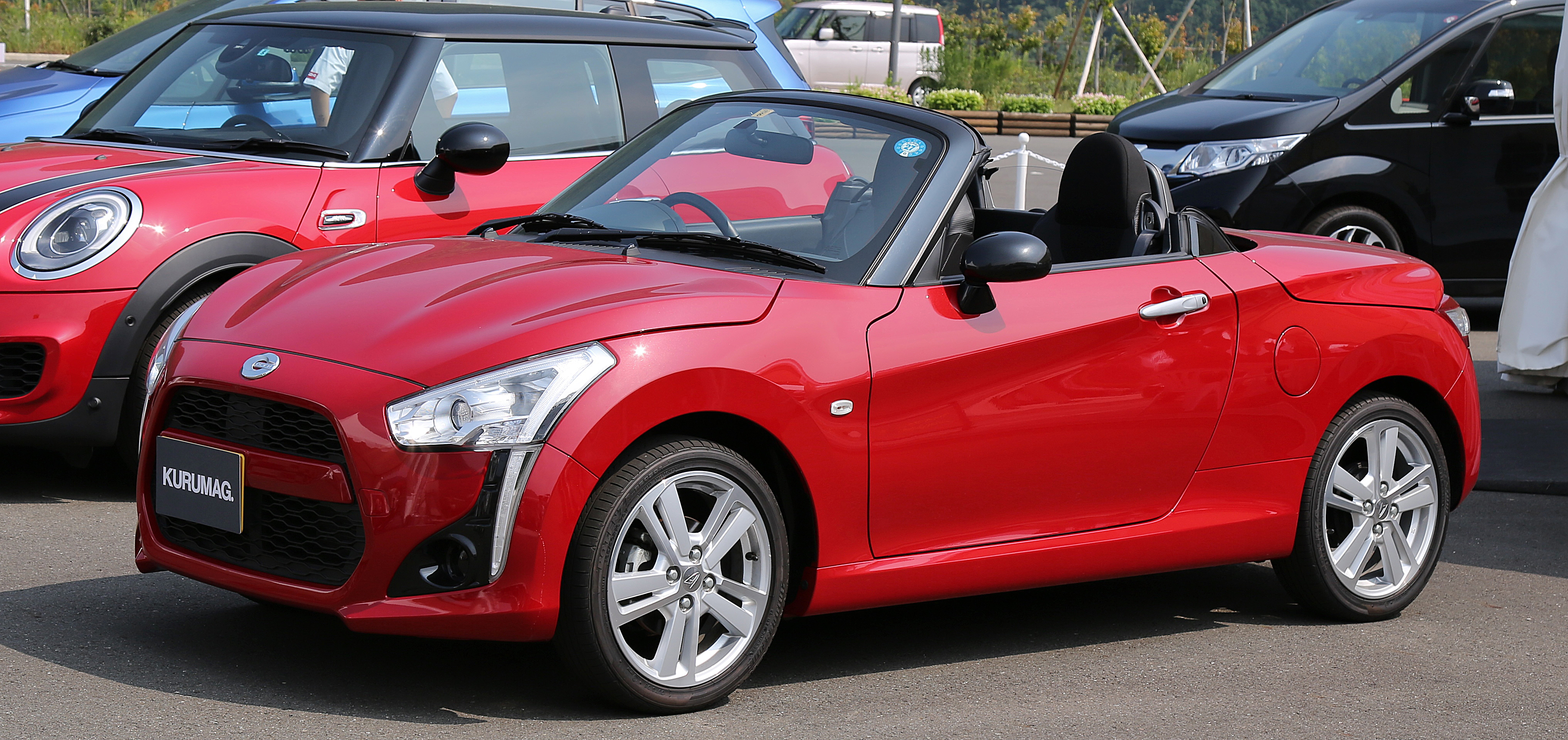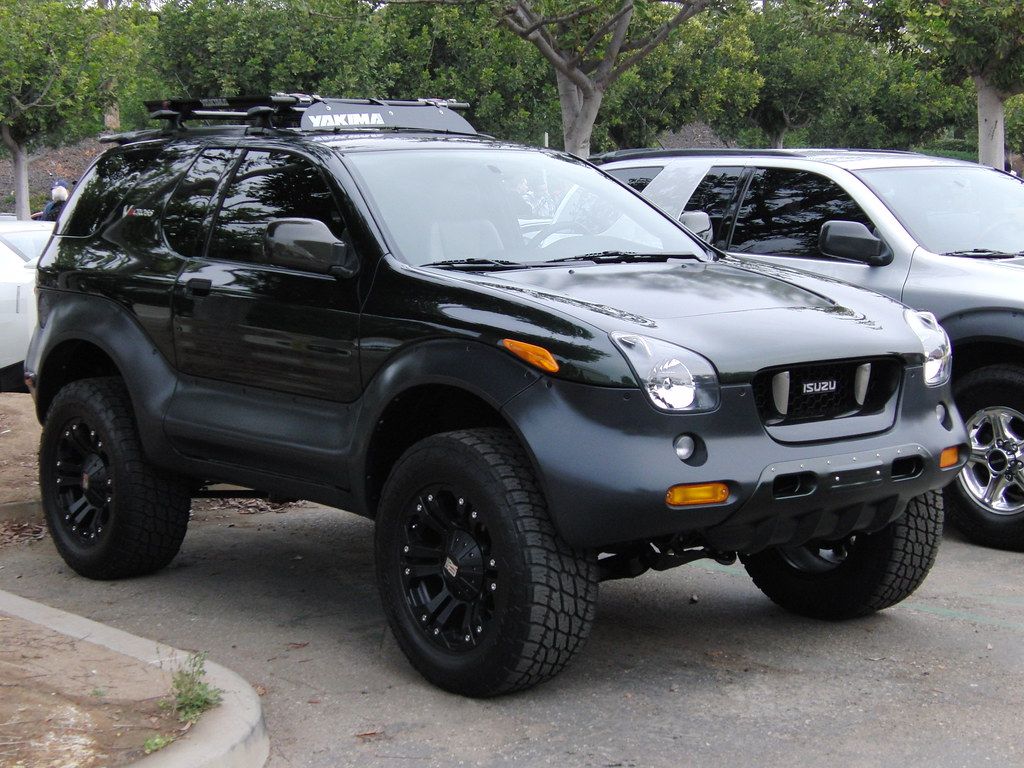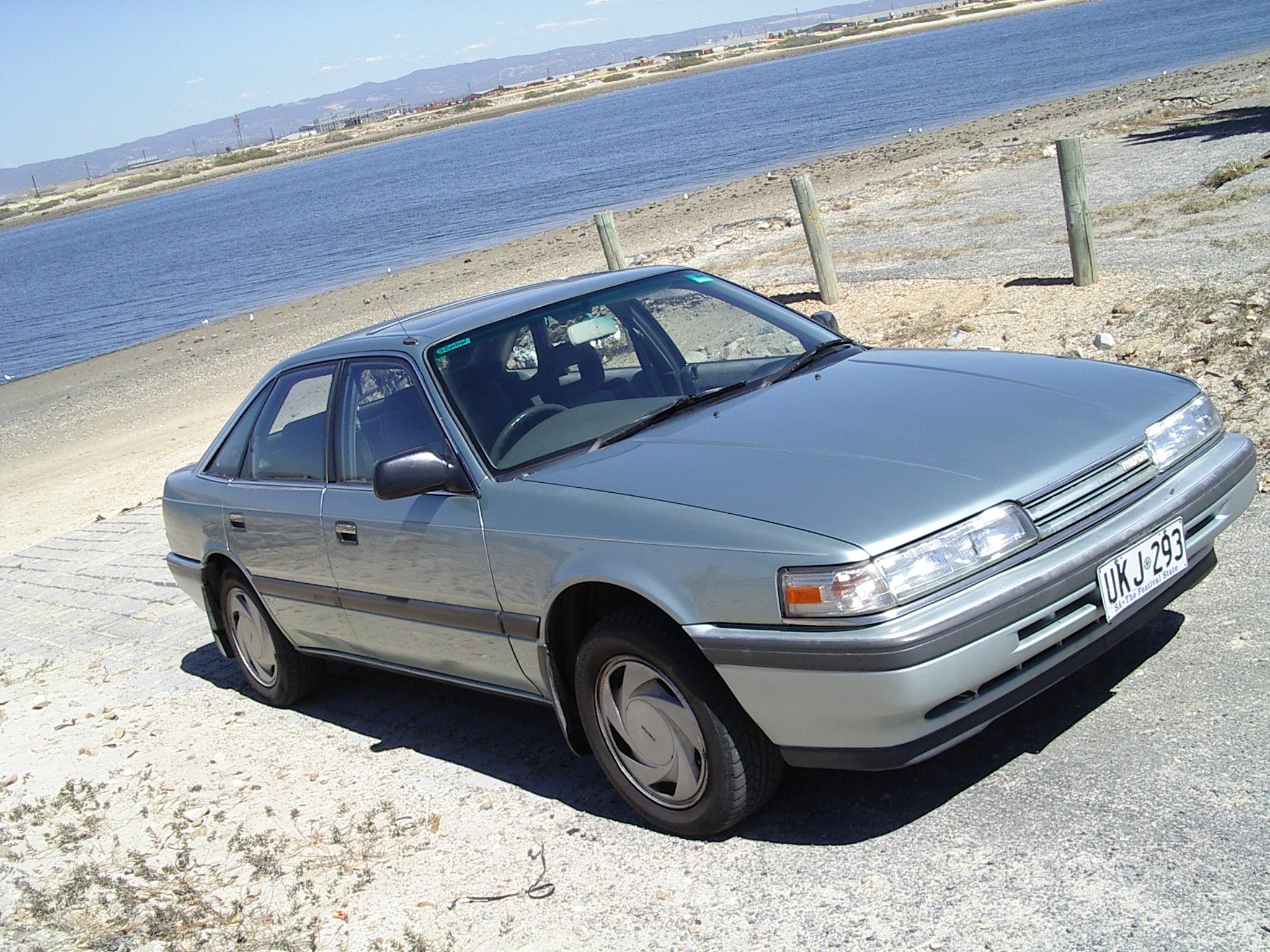
JDM cars hold a truly special place in the hearts of many, revered as icons of an era when carmakers often got it just right. These machines were crafted with a focus on simplicity, a pure connection between driver and road, and an undeniable spirit of enjoyment. While Japanese manufacturers continue to produce impressive vehicles today, they rarely capture the same magic and raw appeal as their 20th-century predecessors, with modern iterations sometimes falling short of their legendary namesakes. It’s a thrill to find those overlooked gems that still embody this golden age.
Indeed, while iconic JDM sports cars like the Toyota Supra Mk4, Nissan Skyline GT-R R34, and Mazda RX-7 FD have rightfully dominated the scene and seen their prices skyrocket, the JDM world is also brimming with many hidden gems. These underappreciated vehicles offer incredible value and surprising performance for those in the know. They’re perfect for enthusiasts who crave something unique, something that stands out from the crowd without necessarily demanding a king’s ransom.
So, whether you’re on the hunt for a reliable daily driver with character, a performance-oriented machine that flies under the radar, or simply a stylish and unique ride that sparks conversation, there are plenty of overlooked JDM cars from the 2000s that are absolutely worth buying. Don’t underestimate the potential of these hidden treasures to deliver an exceptional driving experience and save you some money in the process. We’re diving deep into some of the most underrated JDM cars from the 2000s, proving that sometimes, the best cars are indeed the ones less traveled.

1. **Mitsubishi Airtek Turbo**Mitsubishi introduced the Airtek in 2001, aiming to go head-to-head with the Subaru Forester, a strong contender in the crossover market at the time. However, it didn’t quite hit the mark as hoped, leading to the conclusion of its production in 2005. The Mitsubishi Outlander eventually stepped in to take its place as Mitsubishi’s primary crossover offering, leaving the Airtek as a brief but interesting chapter in the brand’s history.
From a visual standpoint, the Mitsubishi Airtek often feels more like a versatile wagon than a traditional crossover SUV, a characteristic it actually shares with its perceived rival, the Subaru Forester. This wagon-like aesthetic gives it a distinct appeal that sets it apart from more conventional SUVs of its era. For those seeking a JDM wagon that offers something different from the more commonly recognized Nissan Stagea, the Airtek Turbo emerges as a compelling and unique alternative.
What truly cements the Mitsubishi Airtek Turbo’s spot on our underrated list is its surprisingly potent powertrain. It’s often likened to a more affordable, “knock-off” EVO IX wagon, and for very good reason. Under the hood, it boasts the very same 2.0-liter 4G63T engine found in the legendary Mitsubishi EVO, albeit in a slightly detuned state. Paired with an all-wheel-drive platform, this setup creates the ultimate sleeper wagon, capable of delivering unexpected performance and thrilling drives.
While its front-end aesthetics might not win everyone over at first glance, many owners find themselves growing quite fond of its unique look over time, appreciating its distinctive character. Beyond the initial visual impression, the Mitsubishi Airtek Turbo is often praised for its overall perfection in terms of functionality and driving experience. However, potential owners should be aware of a couple of common issues, notably high oil consumption and transmission faults that can occur in higher-mileage examples, which are common considerations for any older JDM vehicle.
When it comes to market accessibility, Mitsubishi Airtek Turbo prices typically start around $5,000 in Japan, making it an intriguing and relatively affordable option for international buyers. Unfortunately, direct importation to the United States isn’t currently possible due to import regulations that apply to vehicles of its age. Enthusiasts in Canada, however, are in luck, as they have the opportunity to import this unique and underrated JDM gem, making it a viable and exciting addition to their collection.

2. **Toyota Brevis**The Toyota Brevis is truly one of those fascinating, little-known Toyota sedans that seems to have been quietly lost to time, despite its intriguing lineage. This car drew significant inspiration from the famously recognized Altezza, which is also known globally as the Lexus IS, a vehicle affectionately dubbed the “gentleman’s Supra” by enthusiasts. However, with Altezza prices steadily climbing, especially for units boasting the coveted 3.0-liter 2JZ engine, the Brevis emerges as a fantastic, budget-friendly alternative for those in the know.
While other options exist with powerful 1JZ or 2JZ engines, such as the highly sought-after Toyota Mark II and Toyota Chaser, these too are increasingly becoming overpriced, often fetching figures well above $20,000 that many enthusiasts are reluctant to pay. In stark contrast, Toyota Brevis prices can start around a mere $3,000 in Japan. This makes the total importation costs to places like Canada potentially less than $7,000, presenting a truly budget-friendly path to JDM greatness and an exciting project car opportunity.
A significant aspect of the Toyota Brevis’s underrated status stems from its exclusivity; Toyota never actually sold this model outside of Japan during its production run between 2001 and 2007. For many readers, this might even be the very first time encountering its name, which only adds to its allure as a truly niche and special find. This limited availability naturally contributes to its unique appeal among collectors looking for something distinct and less common.
But what really makes it an underrated JDM car, despite its relative obscurity, is its exceptional engine lineup. The Toyota Brevis was offered with a naturally aspirated 2.5-liter 1JZ or a robust 3.0-liter 2JZ engine. While turbocharged options weren’t factory-available during its production, all JZ engines are renowned for their incredible tunability, opening up a world of performance possibilities for enthusiasts looking to unleash more power.
Given its close ties, the Toyota Brevis isn’t vastly different from the Altezza in many respects, which also means it tends to share the same common issues. However, its significant price advantage and unique JDM-only status make it a compelling choice for anyone looking to tap into the legendary JZ engine platform without the steep price tag of its more famous relatives. It’s a genuine hidden gem that promises both luxury and performance potential.

3. **Mitsubishi Galant/Legnum VR4**Dedicated JDM car enthusiasts fondly recall a time when Mitsubishi was truly a powerhouse, crafting some of the finest JDM cars across sports cars, SUVs, and sedans. Among these exceptional vehicles was the Mitsubishi Galant, also known in certain markets as the Mitsubishi Legnum. Within this lineage, two specific variants stood out as truly exceptional: the Galant VR-4 and the Galant AMG, each offering a unique blend of performance and style.
Mitsubishi first introduced the Galant VR-4 in 1987, basing it on the sixth-generation Galant. This move was made to fulfill homologation requirements for Group A WRC regulations, showcasing its serious performance intent. Initially, it featured a potent 2.0-liter 4G63T engine. Later, in 1992, this engine was replaced by a 2.0-liter twin-turbo V6, and by 1996, a more powerful 2.5-liter twin-turbo V6, consistently pushing the boundaries of its performance capabilities.
What truly makes the Galant special is its historical significance; it was the very first car in which Mitsubishi utilized the now-legendary 4G63T engine, earning it the well-deserved title of the EVO’s godfather. The VR-4 variant elevated this status even further, boasting an advanced all-wheel-drive platform and unique technological tweaks such as Mitsubishi’s innovative AYC (Active Yaw Control) system, which greatly enhanced its handling and agility.
Adding another layer of allure, the Galant VR-4 was also available as a wagon variant, known as the Legnum VR-4. This wagon not only heightened practicality, offering additional cargo space for daily use, but also injected an extra dose of coolness into the model lineup. It perfectly preserved the exhilarating performance characteristics of the sedan, making it a distinctive and appealing option for those seeking a blend of power and versatility in a more family-friendly package.
In essence, the Mitsubishi Galant VR-4 is a captivating yet somewhat overlooked member of Mitsubishi’s automotive legacy. With its twin-turbocharged V6, sophisticated AWD system, and the undeniable practicality and coolness of the Legnum VR-4 wagon, it presents a distinctive and appealing option. It truly stands apart from the more widely recognized Lancer Evolution series, offering a unique blend of attributes that make it highly desirable for collectors.

4. **Daihatsu Copen**Kei cars, those charmingly small and efficient vehicles, are arguably among the most underrated JDM cars, with many people still underestimating their appeal. They are often incredibly cheap to acquire, offer loads of fun to drive, and boast a unique character that makes them stand out. While some might initially ridicule you for owning one, people quickly come to appreciate just how cool it is to own such a distinctive vehicle. The Daihatsu Copen is a prime example of this phenomenon.
The Daihatsu Copen offers an excellent alternative if you’re looking for something akin to the Honda Beat but desire a slightly more modern feel and an even more unique presence. While Jeremy Clarkson of Top Gear might have humorously pointed out its “toyish” appearance, and his towering stature certainly made for comical contrasts with its compact cabin, for most, the Copen is simply perfect. Its blend of modern design and classic Kei car charm is irresistible.
The Copen falls squarely into the category of Kei sports cars, meticulously adhering to Japan’s stringent Keijidosha regulations that govern small city cars. In its Japanese domestic market (JDM) configuration, the Copen was equipped with a diminutive yet spirited 0.66-liter turbocharged inline-4 engine, which generated a modest but enjoyable 63 horsepower. This specific engine, while small, perfectly suited the car’s lightweight and agile nature, contributing to its thrilling driving experience within city limits.
Internationally, however, the Copen often received a more robust 1.3-liter naturally aspirated inline-4 engine that produced a more substantial 89 horsepower, catering to different market demands and driving conditions. Regardless of the engine, the Copen was universally celebrated for its exceptional maneuverability, making it an absolute breeze to park in even the tightest urban spaces. Its impressive fuel efficiency was another noteworthy attribute, making it a practical and economical choice.
Cruising with the top down in the hot summer weather is undeniably one of the best feelings ever in a Copen, embodying pure open-air motoring joy. You shouldn’t even think about trying to race a Mazda Miata, as that turbocharged 660cc engine will likely embarrass you good. Besides its underpowered engine by modern standards, the Daihatsu Copen is largely non-problematic, with the only major reported issue being occasional roof hinge failure, a small price to pay for such a delightful and distinctive convertible.
Read more about: Unearthing JDM Gems: 10 Forgotten Japanese Coupes and Roadsters Primed for Tuner Glory

5. **Nissan Laurel**Nissan has arguably crafted some of the most iconic JDM cars of the 1990s, yet many of these incredible machines remain unknown to a wider audience, often overshadowed by the colossal popularity of the Nissan Skyline and Fairlady. Among these unsung heroes are sedans like the Nissan Laurel, which haven’t been frequently imported or bought in the United States, consequently keeping their prices attractively low due to the reduced demand. It’s a true hidden gem for those seeking something different.
Making things even more interesting, the Nissan Skyline itself was produced as a Sedan, a variant that most buyers often preferred over other Nissan sedans, further contributing to the Laurel’s understated presence. Despite this, the Nissan Laurel holds its own, sitting just below Nissan’s more prestigious VIP sedans such as the Cima, Cedric, and President. However, it possesses a significant advantage that those luxury liners don’t: the legendary RB series engines, primarily associated with the Nissan Skyline.
For those new to Nissan engines, the RB, which stands for Race Bred, series are widely considered among the best JDM tuner engines available, renowned for their robust build and massive tuning potential. It’s important to note, however, that not all production years of the Nissan Laurel came equipped with RB engines as standard. You’ll have a much better chance at scoring an RB engine if you specifically target the C33, C34, or C35 generations of the Nissan Laurel, which spanned from 1989 up to 2002 for the C35.
Unless a previous owner had already performed an engine swap, you wouldn’t typically find a twin-turbocharged RB26 in a Nissan Laurel from the factory. Instead, you’d more commonly find a naturally aspirated or turbocharged RB20 or RB25 engine, which are still fantastic and highly capable powerplants in their own right. While enthusiastic drivers might initially be disappointed that most Laurels were produced with an automatic transmission, swapping to a manual transmission is a straightforward modification, even for beginners, thanks to ample aftermarket support.
Thanks to its front-engine and rear-wheel-drive platform, the Nissan Laurel makes for an absolutely perfect drift car build, offering a balanced chassis and easy modifications for sliding action. Moreover, tuning and modifying a Nissan Laurel is a walk in the park, largely due to the Nissan Skyline’s broad and extensive aftermarket support, with many parts being interchangeable. It also functions as a low-key show car, like many JDM sedans, looking especially mint with polished chrome bits, a set of nice wheels, and a fresh metallic wrap or paint job.
Read more about: Parking Lot Purgatory: 14 Vehicles Owners Deeply Regret After Years of Ownership

6. **Lexus SC400**The Lexus SC series was strategically positioned as a more upscale and refined version of the Toyota Soarer coupe, a vehicle that itself shared its robust platform with the truly iconic Toyota Supra Mk4. The Soarer offered an impressive array of engine options to cater to various performance preferences, including the potent 2.5-liter twin-turbo 1JZ-GTE, the legendary 3.0-liter twin-turbo 2JZ-GTE, or the smooth 4.0-liter 1UZ-FE V8, providing different levels of performance and driving character.
In contrast, the Lexus SC400, which arrived two years after the introduction of the luxurious Lexus LS400 sedan, featured a naturally aspirated 2JZ inline-six engine or the sophisticated V8 powerplant. Specifically, it utilized the same reliable 4.0-liter V8 engine found in the LS400. This V8 engine produced a respectable 260 horsepower and an equally impressive 260 lb-ft of torque, delivering smooth, consistent power primarily to the rear wheels, ensuring a refined yet engaging driving experience.
One of the most noteworthy and exciting aspects of the SC400, much like its Supra sibling, was its significant potential for aftermarket tuning and modifications. Enthusiasts quickly discovered that both the naturally aspirated 2JZ and the robust V8 engines had a wealth of untapped performance potential just waiting to be unleashed. This made them ideal candidates for various upgrades designed to increase both horsepower and overall performance, appealing greatly to the tuner community.
This blend of luxury and latent performance makes the SC400 a truly underrated gem from the JDM world, especially for those who appreciate understated power and refinement. Its production run lasted from 1991 to 2000, meaning many examples were still fresh and highly desirable at the turn of the millennium. It provided a compelling package for those seeking a grand touring coupe with a touch of elegance and the underlying muscle of its Toyota counterparts.
With its comfortable interior, timeless styling, and the sheer tunability of its drivetrain, the Lexus SC400 offers an incredible value proposition for collectors today. It stands as a testament to an era when luxury and performance could coexist gracefully, providing a rewarding ownership experience without the exorbitant costs associated with its more famous platform-mate, the Supra. It’s a car that truly deserves more recognition.
Read more about: Beyond the Hype: 12 Underestimated Coupes That Quietly Redefined Value and Performance

7. **Nissan Stagea**The Nissan Stagea was a genuinely spacious and incredibly practical family wagon that captivated many, not only because it shared striking design elements reminiscent of the celebrated Skyline series but also crucially, because it utilized the very same robust engines and drivetrains. This unique combination made it an instant hit for those needing practicality without sacrificing performance or style, truly blurring the lines between family hauler and sports car.
Among the most sought-after Stagea models was the 25RS, which came equipped with the formidable 2.5-liter RB25 engine, a powerhouse directly sourced from the iconic Skyline GT-T. This engine choice alone immediately set the Stagea apart from typical wagons, giving it a spirited character and significant performance potential right out of the factory. It offered a taste of Skyline performance in a more versatile package.
In 1998, a facelifted ‘Series 2’ model was introduced, bringing with it a game-changing addition that sent ripples through the enthusiast community: the 260RS variant. This incredible version incorporated the formidable 2.6-liter RB26DETT engine, directly from the legendary Skyline GT-R itself, providing the Stagea with the exact same powerplant as a bona fide sports car. Imagine a family wagon with the heart of a GT-R – truly remarkable.
Notably, many Stagea owners enthusiastically opted to modify their vehicles further by swapping out the front-end components – specifically the headlights, bumper, and fenders – to mimic the aggressive and iconic appearance of the R34 GT-R. The result was one of the most striking and stylish wagons ever to hit the road, creating a visually stunning vehicle that boasted both practicality and unparalleled street presence. This modification allowed owners to create a unique blend of utility and high-performance aesthetics, often dubbed the ‘GT-R Wagon’.
Produced from 1996 to 2001, the Nissan Stagea perfectly fits the bill as an underrated JDM car from the 2000s, offering incredible value and customization potential. It’s a testament to Nissan’s engineering prowess, providing a practical vehicle that doesn’t compromise on the thrilling driving experience and tuner culture appeal. For those looking for a versatile and high-performance JDM car that turns heads and can carry the groceries, the Stagea is an absolute must-consider.
Okay, so we’ve explored some incredible JDM finds already, proving that there’s a whole world of awesome out there beyond the usual suspects. But guess what? We’re not even close to done! The 2000s were a golden era for Japan’s domestic market, producing cars that are just begging for a spot in your garage.
Now, let’s keep this treasure hunt going and uncover seven more hidden JDM gems from the 2000s that absolutely deserve your attention. These next few cars bring their own unique blend of cult status, customization potential, and irresistible charm that’ll have you rethinking your dream car list. Get ready to fall in love with the unexpected!

8. **Isuzu VehiCROSS**If you’re into unique and distinctive SUVs, the Isuzu VehiCROSS is practically begging for a spot on your wishlist. Produced from 1997 to 2001, this vehicle isn’t just an SUV; it’s a statement piece, boasting a muscular stance and a rugged appearance that really makes it stand out from the crowd. It’s perfect for anyone who craves a vehicle with undeniable character.
Underneath its eye-catching exterior, the VehiCROSS is powered by a robust 3.5-liter V6 engine, churning out a respectable 190 horsepower. This isn’t just for show; its advanced all-wheel-drive system significantly enhances its off-road capabilities, making it a surprisingly fun choice for adventurous drivers looking to tackle more than just the urban jungle. Imagine hitting those trails in something so cool!
What really adds to its allure is its rarity; only about 5,000 units were ever made for North America. This scarcity makes the VehiCROSS a truly special find today. If your taste leans towards vehicles that are genuinely different and command a second look, the Isuzu VehiCROSS absolutely deserves more recognition and love within the JDM scene. It’s a quirky gem just waiting to be appreciated.
Read more about: Automotive Hall of Shame: 16 Truly Ugly Cars

9. **Honda Inspire**Did you know that five-cylinder engines aren’t exclusively a German thing? Honda, yep, Honda, was actually the first JDM manufacturer to produce a 5-cylinder engine, and they prominently featured it in some of their sedans for both the US and Japanese markets. This unique engine first made its appearance in the Honda Vigor, also known as the Acura Vigor in the US. How cool is that for a bit of automotive trivia?
So, why does the Honda Inspire land on our list of underrated JDM cars? Well, the 5-cylinder engine is a huge part of its charm, obviously! But beyond that, it’s an incredibly underrated JDM luxury sedan. Honda isn’t typically renowned for its luxury sedans; that category is usually dominated by Toyota and Nissan, making the Inspire a truly unique offering in its class.
JDM sedans often have very distinctive looks, and the Honda Inspire is no exception. It offers a blend of elegance and Japanese practicality that stands apart. Imagine rolling into a car show where everyone is flaunting their heavily tuned engines; you could simply pop the hood and proudly showcase that rare Honda 5-cylinder engine. It’s a fantastic conversation starter and a testament to Honda’s often-overlooked engineering prowess.
Read more about: Under the Hood Heroes: 16 Import Cars Mechanics Secretly Adore for Bulletproof Reliability and Unsung Value

10. **Honda Orthia 2.0GX**Prepare for a JDM rarity that often flies completely under the radar, especially in North America. The Honda Orthia is one of those fantastic JDM cars that was never officially sold in the United States, and that’s precisely part of its charm. Specifically, we’re talking about the all-wheel-drive Orthia GX featuring the robust 2.0-liter B20B engine. While it might essentially be a sixth-generation Civic wagon, its obscurity on US and Canadian roads makes it a truly special sighting.
When it comes to Honda, top-notch reliability is practically a given, and the Honda Orthia wholeheartedly lives up to that reputation. While some enthusiasts might lament the absence of a VTEC engine in the Orthia lineup, there’s a fantastic silver lining: you can snag the 2.0GX specification with a highly desirable 5-speed manual transmission. This combination offers a direct, engaging driving experience that’s hard to beat.
But here’s where the Orthia really shines for tuners and enthusiasts. Despite its modest factory output, the B20B engine has incredible potential. With the right tuner and quality aftermarket parts, it’s surprisingly easy to push the B20B well past the 500-horsepower mark! Plus, sourcing parts is a breeze because it shares almost everything with the widely popular sixth-generation Civic, and swapping components from other Hondas is a straightforward affair, making it an excellent platform for customization.

11. **Mitsubishi Mirage Cyborg**When we talk about JDM hot hatches, the Honda Civic often steals the spotlight with its legendary tunability. But what if we told you there’s an under-the-radar contender that’s giving the Civic a serious run for its money, and some might even argue it’s better? Enter the Mitsubishi Mirage Cyborg, also known as the Mitsubishi Colt Cyborg in export markets. All eyes are on this beast, and honestly, even the name alone, “Cyborg,” just screams cool and makes you want to own one!
Mitsubishi produced the Mirage Cyborg exclusively for the Japanese domestic market as a high-performance specification of the fourth-generation Mirage. It proudly draws inspiration from a lineage of performance greats, including the first-generation Colt turbo, the Mirage 1600GT, and the Lancer GS-R. Yes, these are distinct models, but they all share the same front-wheel-drive platform, with some variants even boasting an all-wheel-drive setup, giving the Cyborg a formidable pedigree.
Under the hood, the Mitsubishi Mirage Cyborg was offered with some seriously exciting engine options: a MIVEC 1.6-liter, a turbocharged 1.9-liter, and even a potent 2.0-liter engine. While prices for the base specification with the 1.6-liter engine start around a very reasonable $10,000, the turbocharged variants, especially those with the 2.0-liter engine, typically retail for over $15,000. Considering you’re getting what many consider the “holy grail” of 4-cylinder engines, that’s an absolute bargain for such an exceptional performance hot hatch.
Car Model Information: 2025 Alfa Romeo Stelvio Sprint
Name: Mitsubishi Mirage
Caption: Mitsubishi Mirage (sixth generation)
Manufacturer: Mitsubishi Motors
Production: 1978–2003,2012–present
Class: Subcompact car
Layout: Front-engine, front-wheel-drive
Predecessor: Mitsubishi Lancer (A70)
Successor: Mitsubishi Lancer#Eighth generation (2000)
Categories: 1980s cars, 1990s cars, 2000s cars, 2010s cars, 2020s cars
Summary: The Mitsubishi Mirage is a range of cars produced by the Japanese manufacturer Mitsubishi from 1978 until 2003 and again since. The hatchback models produced between 1978 and 2003 were classified as subcompact cars, while the sedan and station wagon models, marketed prominently as the Mitsubishi Lancer, were the compact offerings. The liftback introduced in 1988 complemented the sedan as an additional compact offering, and the coupé of 1991 fitted in with the subcompact range. The current Mirage model is a subcompact hatchback and sedan and it replaces the Mitsubishi Colt sold between 2002 and 2012.
Get more information about: Mitsubishi Mirage
Buying a high-performing used car >>>
Brand: Mitsubishi Model: Mirage Cyborg
Price: $54,000 Mileage: 889 mi.

12. **Honda SM-X**Alright, so JDM minivans aren’t usually the first thing that comes to mind for car enthusiasts, right? But the Honda SM-X, affectionately nicknamed the “JDM Love Hotel,” is definitely one that challenges those perceptions. On the surface, it might not seem overtly captivating in the way a sports car is, but trust us, a tastefully modified Honda SM-X has a unique charm that might just sway you to consider owning one.
With a few thoughtful cosmetic modifications, this quirky minivan can look cool enough to draw a small crowd at any car show. It’s certainly not the kind of car you build to race a K-series Honda Civic, but here’s a cool secret: it’s surprisingly tunable! Underneath its practical exterior, it hides a 2.0-liter B20B engine, offering plenty of potential for upgrades, even if it’s a non-VTEC unit.
Now, let’s address the elephant in the room: why on earth is it called the “JDM Love Hotel”? Well, rumor has it that Honda intentionally designed the SM-X with a “love-making cabin” in mind. All the seats can be lowered and recede flush with each other, creating an unexpectedly spacious and private interior. And get this: they even named it SM-X so that when you turn the letter M anticlockwise, it looks like an E – the same direction in which the seats fold. How’s that for a fun, somewhat cheeky design detail? Now you know!
Car Model Information: 2013 Honda Civic LX
Name: Honda Accord
Caption: 2023 Honda Accord LX (US)
Alt: Front three-quarter view of a front-engined four-door car.
Manufacturer: Honda
Production: 1976–present
Class: Compact car
BodyStyle: hatchback
Layout: Front-engine, front-wheel-drive layout
Predecessor: Honda 1300
Categories: 1980s cars, 1990s cars, 2000s cars, 2010s cars, 2020s cars
Summary: The Honda Accord (Japanese: ホンダ・アコード, Hepburn: Honda Akōdo; ), also known as the Honda Inspire (Japanese: ホンダ・インスパイア, Hepburn: Honda Insupaia) in Japan and China for certain generations, is a series of automobiles manufactured by Honda since 1976, best known for its four-door sedan variant, which has been one of the best-selling cars in the United States since 1989. The Accord nameplate has been applied to a variety of vehicles worldwide, including coupes, station wagons, hatchbacks and a Honda Crosstour crossover.
Get more information about: Honda Accord
Buying a high-performing used car >>>
Brand: Honda Model: SM-X
Price: $8,720 Mileage: 107,740 mi.

13. **Mazda 626 Turbo**Let’s shine a light on one of the most underrated JDM cars from the 20th Century that often gets overlooked: the Mazda 626 Turbo, known in its home market as the Mazda Capella Turbo. Unlike its more famous rotary-powered siblings like the Mazda RX-7 or Mazda Cosmo, this gem comes with a piston engine. For many, that’s actually a good thing, as rotary engines, while legendary, can sometimes be a bit problematic and delicate, making a piston engine a more robust and practical choice for daily enjoyment.
Mazda first introduced a turbocharged engine into the 626 lineup with the third generation, but it’s the fourth generation that truly captures enthusiast attention. Why? Because some units were produced with an all-wheel-drive platform, and the 2.2-liter engine found in these models is known for its capability to achieve higher power outputs with tuning. While front-wheel-drive variants are still excellent cars, the AWD offers superior handling and traction, making it a more desirable setup.
One truly groundbreaking feature that made the Mazda 626 Turbo stand head and shoulders above its competition during its production years was its four-wheel-steering system. This advanced technology was only available in a select few Mitsubishis and Hondas at the time, showcasing Mazda’s innovative spirit. While finding one of the rare 626s with 4WD today might be a challenge, the hunt is absolutely worth it for such a technologically advanced classic. When considering a purchase, keep an eye out for common issues like high oil consumption, electronics failure, tie rod failure, and the ever-present rust that can plague older JDM cars, but don’t let these minor considerations deter you from owning a truly fantastic and pioneering Mazda.
Car Model Information: 2025 Alfa Romeo Stelvio Sprint
Name: Mazda Capella
Caption: Sixth-generation Mazda 626 sedan
Manufacturer: Mazda
Class: Compact car
Layout: front-engine, rear-wheel-drive layout,front-engine, front-wheel-drive layout,front-engine, four-wheel-drive layout
Production: 1970–2002
Successor: Mazda6
Categories: 1980s cars, 1990s cars, 2000s cars, All-wheel-drive vehicles, All Wikipedia articles written in British English
Summary: The Mazda Capella, also known as the 626 in Europe, North America and Southeast Asia, is a mid-size car that was manufactured by Mazda from 1970 until 2002. Sold in the Japanese domestic market under the Capella name, the vehicle was also commonly known in other major markets as the Mazda 626. Ford, Mazda’s partner at the time, also used the Capella platform to create the Ford Telstar and Ford Probe. 4,345,279 of the 626 and Telstar models were sold worldwide.
Designed to compete against Japanese mid-size stalwarts such as the Honda Accord, Toyota Corona, and Nissan Bluebird, the Capella was succeeded by the Mazda6 (Atenza) in 2002.
The car was named after Capella, the brightest star in the constellation Auriga, the sixth-brightest in the night sky and the third-brightest in the northern celestial hemisphere, after Arcturus and Vega.
Get more information about: Mazda Capella
Buying a high-performing used car >>>
Brand: Mazda Model: 626 Turbo
Price: $54,000 Mileage: 889 mi.
Read more about: Under the Hood Heroes: 16 Import Cars Mechanics Secretly Adore for Bulletproof Reliability and Unsung Value

14. **Subaru SVX**The Subaru SVX is an incredible testament to Subaru’s engineering ambition, even if its production never quite reached large-scale success. It was designed as a sophisticated sporty coupe, aiming to make a splash in a market that, unfortunately, was rapidly diminishing in the late 1990s and early 2000s. Adding to its challenges, the SVX was quite heavy, thanks to its powerful 3.3-liter flat-six engine, and it carried a higher price tag than any other Subaru at the time. This meant it struggled to find a solid target market, as most customers gravitated towards the more established Subaru Legacy or the performance-focused Impreza WRX.
Despite its commercial struggles, the SVX was built from the ground up as a Grand Tourer Vehicle, and it truly delivered on that promise. Step inside, and you’ll find an adequately comfortable interior, adorned with luxury touches that were cutting-edge for its era, such as Alcantara seats, gauges elegantly integrated into the center console, and for high-spec variants, a stunning glass top. While these features might seem dated by today’s standards, back in the 1990s, they screamed high-end sophistication and offered a truly premium driving experience.
Only 24,379 SVXs were ever made, making it a relatively rare sight today. What’s truly surprising, though, is that despite its rarity and grand tourer pedigree, prices for the Subaru SVX aren’t exorbitant at all. You can still easily find one for less than $6,000, which makes it an incredibly appealing and “easy-to-flip” JDM car for savvy collectors. It’s a distinct piece of Subaru history, offering luxury, performance, and uniqueness without breaking the bank, truly deserving of more attention from enthusiasts.
Car Model Information: 1994 Subaru SVX LSi
Name: Subaru SVX
Manufacturer: Subaru
Aka: Subaru Alcyone SVX
Production: 1991 – December 1996
Assembly: Subaru#Manufacturing facilities,Ōta, Gunma
Designer: Giorgetto Giugiaro
Class: Grand tourer
BodyStyle: coupé
Layout: Front-engine, four-wheel drive layout,Front-engine, front-wheel drive layout
Engine: Subaru six-cylinder engines#EG33,flat-six engine
Transmission: List of Subaru transmissions#4EAT,automatic transmission
Wheelbase: cvt
Length: cvt
Width: cvt
Height: cvt
Weight: cvt
Predecessor: Subaru XT
Categories: All-wheel-drive vehicles, All articles needing additional references, All articles that may contain original research, All articles with unsourced statements, Articles needing additional references from February 2019
Summary: The Subaru SVX, marketed in the Japanese home market as the Subaru Alcyone SVX, is a two-door, front-engine, all- or front-wheel drive coupé manufactured and marketed by Subaru from 1991 to 1996 over a single generation.
Superseding the company’s aviation-influenced XT range, the SVX was Subaru’s first entry into the luxury/performance market, and was noted for its aircraft-inspired ‘window-within-a-window’ side-glass configuration.
The nameplate “Alcyone” (pronounced “al-SIGH-uh-nee”) refers to the brightest star in the Pleiades constellation, stylized in the Subaru company logo. The suffix “SVX” is an acronym for “Subaru Vehicle X”.
Get more information about: Subaru SVX
Buying a high-performing used car >>>
Brand: Subaru Model: SVX
Price: $10,999 Mileage: 142,216 mi.
Read more about: Ignored No More: Unearthing the 16 Most Underrated Foreign Classic Cars of the 1990s
So there you have it, fourteen incredible JDM cars from the 2000s that are just waiting to be discovered and celebrated! From humble family haulers with surprising performance to luxurious coupes that challenged the norms, these underappreciated gems offer a unique blend of character, tunability, and undeniable cool factor. Each one tells a story, a chapter from an era when Japanese manufacturers dared to be different, delivering vehicles that were simple, driver-focused, and built for pure enjoyment. Whether you’re dreaming of a unique daily driver, a show-stopping project car, or a high-performance machine that flies under the radar, these overlooked treasures prove that sometimes, the most rewarding journeys are found on the roads less traveled. Don’t just dream about them—go out and find your next JDM obsession!



